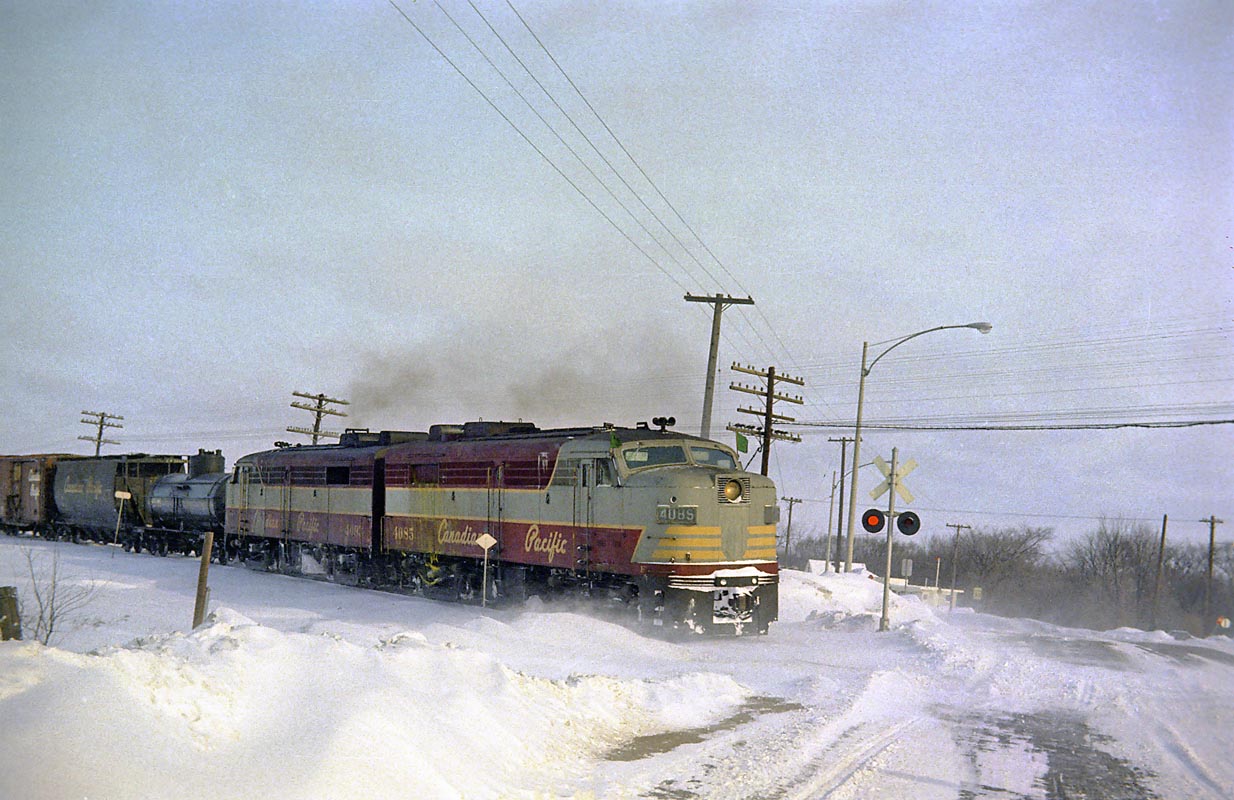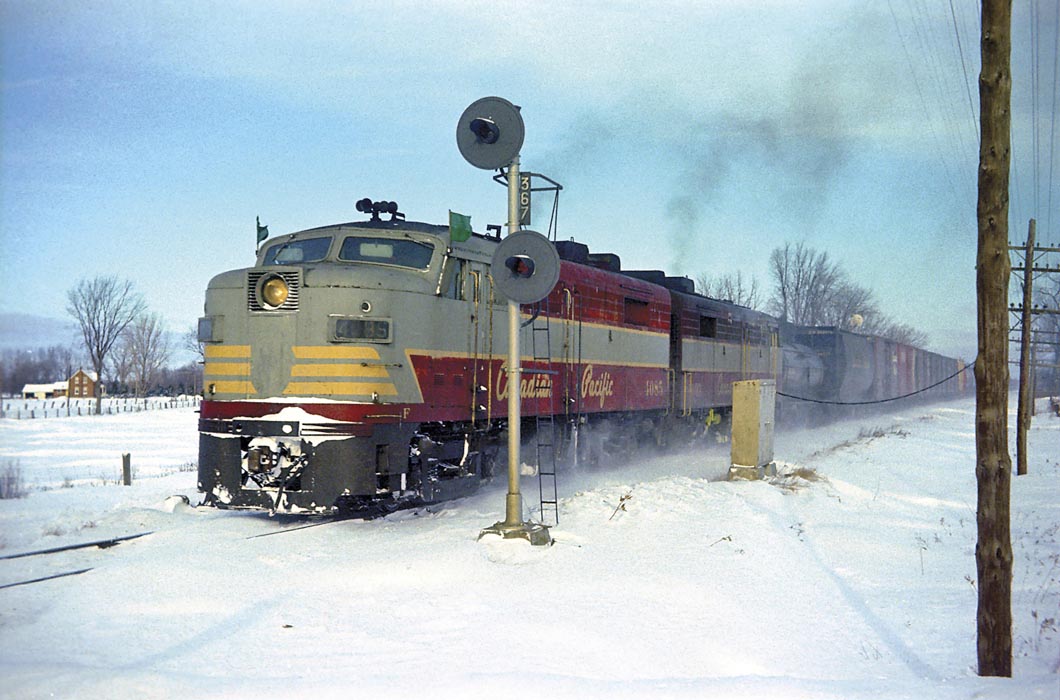
 Carleton Place During my dispatching days on the CP at Smiths Falls, Ontario from 1969 to 1974, we would get a lineup, or 'update', as Sudbury called it, on the trains planned into Chalk River, Ontario for the next twenty-four hours, along with the power on each train if it was known. The train dispatcher in Sudbury would give it to the operator at Chalk River who would give it to us, and we'd give him ours to relay back to Sudbury. In January 1973, during the time that this picture was taken, I was working the 12-8am shift on the Chalk River desk. There were two desks in Smiths Falls at this time, the Winchester, or east end, the Chalk River, or north end. The west end was handled by Toronto. During the day shift there were two dispatchers. However, by this time, due to declining traffic, from 4-12 and 12-8 just one man handled the division. I had relieved the 4-12 guy who had shown me Sudbury's lineup, revealing both a Number 60 and a 62 into Chalk River from North Bay, both fourth-class trains. Those were the only two fourth-class trains on the North Bay Subdivision timetable. On the Chalk River Subdivision, there were three fourth-class trains: Number 72, the wayfreight, who was running just three days a week by this time, and Numbers 74 and 76. The 76 was due out of Chalk River at about 2030, the 72 at 0600, and the 74 at 1320, and all were carded daily. These were merely schedules so that the train dispatcher did not have to run them as extras, as all westward freight trains except for Number 949 and Number 911 were extras. There was only one crew in Chalk River off 911 to cover their Number 60 /our 76, but if 62 came out of North Bay with anything hot, such as traffic off the ONR, we would deadhead a crew up on 949. With 72 running, we would not be able to run anything out of Chalk River until 1320, on 74's schedule. And these fourth-class schedules were very slow: five plus hours from Chalk River to Smiths Falls. With 60mph track, it could be done in two and a half hours. So I had the operator at Chalk River copy train orders to run him as First 76, or as former Smiths Falls dispatcher John Galvin used to say, 'Number 76 will wear the rag tonight!' He left Chalk River about 0500, with a pair of 'Script' FA2's and made his own meet with 949 around Renfrew. We were not allowed to make train order meets with fourth-class trains or their opposing first-class (Train Number 1 - the Canadian), second-class (949) or third-class (911) trains. When I finished at 0800,1 was relieved by a cantankerous old Irish character by the name of Larry Finner who lived in Almonte. He says to me, 'Why is 76 wearing the rag?" I replied by showing him Sudbury's lineup. Knowing that I was a railfan, he sneered at me. I told him that I was heading up 29 to take some pictures of this guy, and he sneered again. So after bundling up in the cold and sleet, I headed up Ontario Provincial Highway 29 to about where I figured he'd be, Pakenham, Mileage 33. He was just going over the highway bridge as I approached. The weather was nasty, with sleet and 20 degrees and a strong northwest wind blowing, so I turned and shot him at Almonte, Mileage 23, and Carleton Place, as shown here, Mileage 17. I wondered what the train crew thought when they saw me shooting the train after dishing out their orders to them at Chalk River. Then it was home to bed to get ready for another night of dispatching. The following two pictures
were taken at the same time.
 At the east siding switch of Waba. This is
before the new siding was installed there, and paid-for by Ontario
Hydro. They wished to flood an area along this portion of the
Chalk River Subdivision and build a dam on the Madawaska River just
beyond Arnprior. A new track was laid north from here on a long
gentle curve to the east....and of course, the good old CPR had a
siding at old Waba, so the new Waba siding would be 100 cars long, all
paid for by our hydro bills!!
The
yellow stuff on the brake cylinder of the second unit was chromate, an
additive added to the water in the locomotive to help the water flow a
bit better, and to slow freezing, should the locomotive die on the road.
 This is at Almonte,
with the old town hall behind the locomotives. This is the exact
spot
that there was a terrible rear-end collision on Sunday, December 27th,
1942,
when a troop train plowed into the rear of the local passenger train
#550
during a heavy sleet storm. The local train stopped at this point
with
the rear car where the lead locomotive 4085 is passing; the train was
filled
with people heading back to
And as in
the
picture at Waba, the yellow gunk coming down from the roof is chromate,
a water
additive. It is also an indcation to locomotve shop staff that
there is a
water leak somewhere, and it gives them an indication where to look for
it...in
the winter it eventually freezes, so it isn't too hard to find the
leak!! Railroad Explorer, Winter 2007, page 27. |
![]()